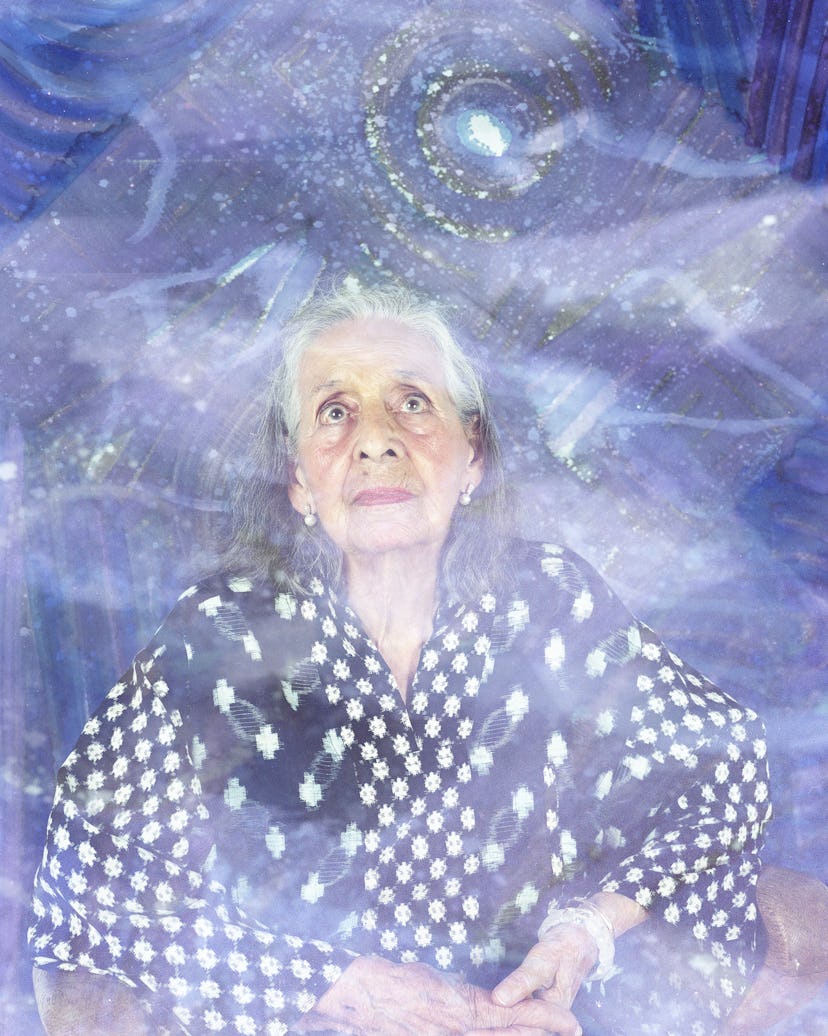The Originals: Painter Luchita Hurtado on Art, Age, and the Time Diego Rivera Broke Open a Piñata With a Gun
“I’ve been working all my life, and then suddenly there’s this interest. I find the work fascinating, but the fact that other people are getting involved is less important.”

In an era where seemingly everything is mined for inspiration—or, let’s be frank, appropriation—what does it take to be truly one of a kind? A willingness to break the rules is essential; a strong sense of personal style certainly doesn’t hurt; but most of all, you need to have a truly meaningful point of view. In every issue of W, we reach out to someone who is constantly pushing boundaries, and ask him or her to share valuable insights. The Originals may be just starting out or in the prime of their careers, but they are all leading the conversation in their chosen fields—whether it’s fashion, art, film, music, photography, or even skateboarding. The bottom line is that, regardless of their differences, they all share one very important trait: for them, standing out, rather than blending in, is not an option but a necessity.
Who was the first person who taught you that you could break the rules? I did. I told myself there were no rules for me from very early on. My mother was very Catholic, and when I would say something crazy, she would cross herself and say, “What priest have I wounded to deserve this child?”
Your last name at birth was García Rodriguez. Why did you change it to Hurtado? Because everyone in Venezuela, where I was born, is García or Rodriguez. So I took the name of a great-grandmother instead when I was a teenager and already painting. By the time I was 12, I was already making paintings of a stove.
A stove? Yes. The flame, the blue with the black over it—it’s magic if you look at it long enough.
Your work has received so much attention in the last couple of years: the Hammer Museum biennial here in L.A., the Serpentine show in London, which is traveling to the Los Angeles County Museum of Art next year, and a retrospective at the Museo Tamayo, in Mexico City, also next year. How does it feel to be the latest art-world discovery? I don’t enjoy it that much because I don’t understand it. I’ve been working all my life, and then suddenly there’s this interest. I find the work fascinating, but the fact that other people are getting involved is less important.
You turned 99 in October. What is the biggest advantage of aging? There are many advantages. With great loves and marriages came unhappy times, too. Now I’m free to be interested in other things: in the planet, in politics. And in the last two days I’ve done some paintings that I’m really excited about. They’re about air, water, the things we need to live—the very things in crisis.
What do these paintings look like? I’ve painted a torso, headless, with arms and limbs, in black, white, red, and yellow, all done on a very special background of wood grain. It’s as if a person were a tree. I love trees.
You’re known for making your own clothes. When I was pregnant, they had these awful butcher-boy shirts for women—that’s when I started to sew. I visualized a black and white striped blouse and made it: It was very décolleté, with a bunch of bright flowers, and I put these puffed sleeves on it, strips of silk. It was my favorite blouse, and I felt very elegant with my big belly.
You’ve known so many great artists, including Diego Rivera and Frida Kahlo when you lived in Mexico City in the ’40s. What were they like? They were incredible. I remember once we were at a party together and there was a piñata filled with candy, but the kids tried and tried and couldn’t knock it open. So Diego went inside and came out with a gun and shot it. I saw that happen. I would say they were both larger than life.